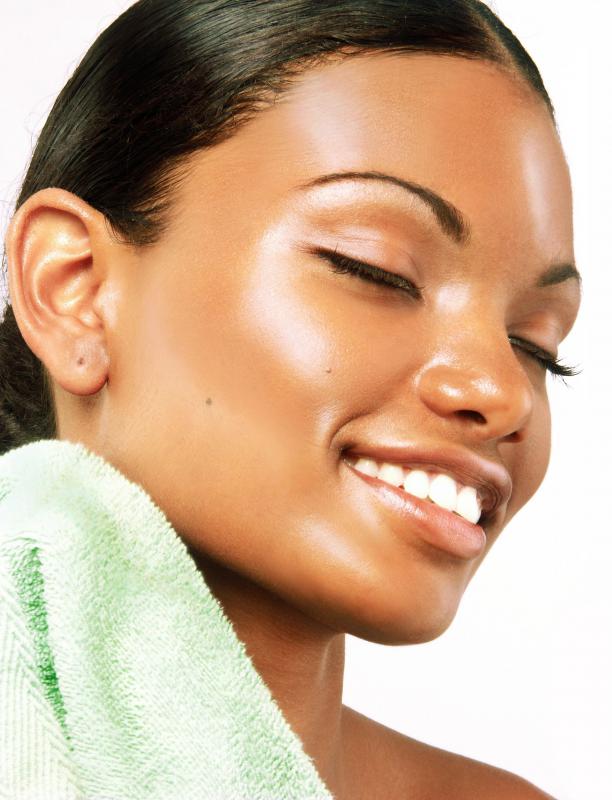At TheHealthBoard, we're committed to delivering accurate, trustworthy information. Our expert-authored content is rigorously fact-checked and sourced from credible authorities. Discover how we uphold the highest standards in providing you with reliable knowledge.
What are Melanomas?
Melanocytes are cells in the skin that contain a pigment called melanin, which is the dark color also found in the hair and in the eye. These cells live between the epidermis and dermis — the top two layers of the skin. As people age, or get lots of sun, the number of melanocytes in the skin may increase, forming dark spots or moles. Most melanomas are benign, which means they are not harmful in any way. In some cases, however, these dark spots or moles can develop into spots that are malignant, which means they are a sign of a serious form of skin cancer.
The development of malignant melanomas has been linked to overexposing the skin to the sun. In fact, some medical professionals believe that receiving just one serious sunburn can double a person’s likelihood of developing malignant melanomas. In addition, two serious sunburns in a person’s childhood or adolescent years can triple the likelihood of developing them.

Malignant melanomas may appear anywhere on a person’s body, including hard to see areas such as in the nail bed, on the scalp, and inside the mouth or nose. Regardless of the location, there are several signs a person should look for when identifying them. The most common technique for inspecting melanomas to determine whether they are benign or malignant is to follow the ABCDs rule.
The A in the ABCDs rule stands for asymmetry. Benign melanomas are symmetrical, so both sides would look the same if the spot was cut in half. Those that are asymmetrical, or that do not have matching halves, are potentially malignant.
The B in the ABCDs rule is the border. Malignant melanomas may have an uneven border, or they may have notched edges or a scalloped look. Those that are benign, on the other hand, have smooth and even borders.
The C represents the color. Benign melanomas are generally one shade of brown throughout. Malignant ones, on the other hand, may have a variety of brown, tan, and black coloring. As they become worse, they may change to white, red, or even blue.
The D of the ABCDs stands for diameter. Malignant melanomas usually grow to a larger size than those that are benign. Any spot that is the size of a pencil eraser or larger is potentially malignant.

Malignant melanomas may show one or several of the signs covered in the ABCDs rule. When caught early, they can be removed, and the patient can recover completely. If allowed to progress, however, the cancer may move to other areas of the body and become a serious, life-threatening disease.
AS FEATURED ON:
AS FEATURED ON:
















Discussion Comments
It's really important to monitor yourself for melanoma signs even if you don't have pale skin. A lot of people with darker complexions assume that since they don't get sunburned, they can't get malignant melanomas, so they fail to keep an eye out for any skin melanomas, and may end up missing the signs of cancer.
This is an especially tragic situation, since there are many melanoma treatments, and it is one of the most curable forms of skin cancer.
So make sure that you remember your ABCs, and keep an eye out for skin cancer, even if you have darker skin -- it could save your life.
Besides the ABCD standard, what are some other signs of melanoma? I have recently developed a mole on my scalp, and I'm really worried that it could be a melanoma of the scalp.
I've looked at a bunch of melanoma pictures, and my mole doesn't look like any of them, but I'm still really paranoid about it.
Is it possible to have a malignant melanoma or skin cancer if you have a mole that doesn't fit the ABCD standard? I'm really not very up on my skin melanomas, so I'd appreciate any advice you could give me.
Nicely done -- I have really pale skin, so I always have to be careful to monitor myself for skin melanoma symptoms.
I try not to get go out when the sun is really bright, and if I do I always wear sunscreen, since there's a history of malignant melanoma in my family.
I'm glad that you included the ABCD standard as well as all the information about how easy it is to move from melanoma to skin cancer.
So many people are unaware of just how at risk for skin cancer they are, so I'm really glad you wrote this article. It's clear, concise, and very educational -- and interesting to boot!
The pigment producing cells are known as melanocytes, not melanomas. These cells are derived from a pluripotent population of cells known as neural crest cells that arise in the dorsal aspect of the neural tube and migrate to different locations in the embryo giving rise to different cell lineages, such as melanocytes.
Post your comments